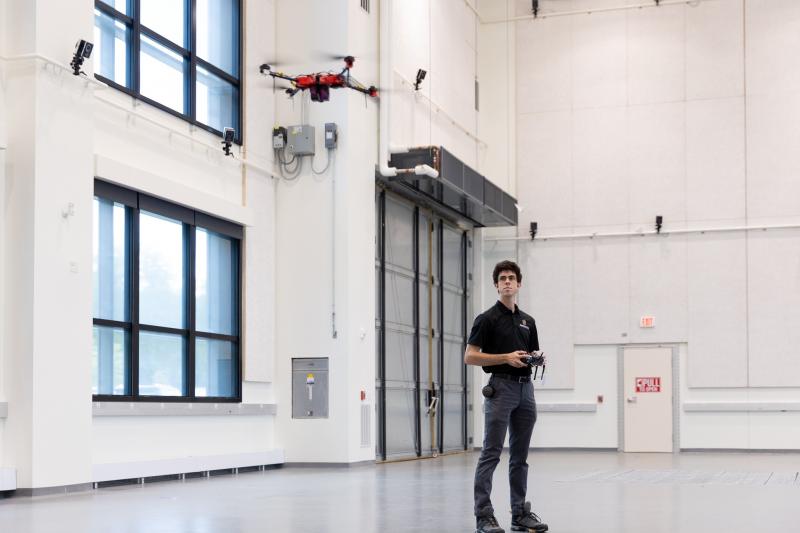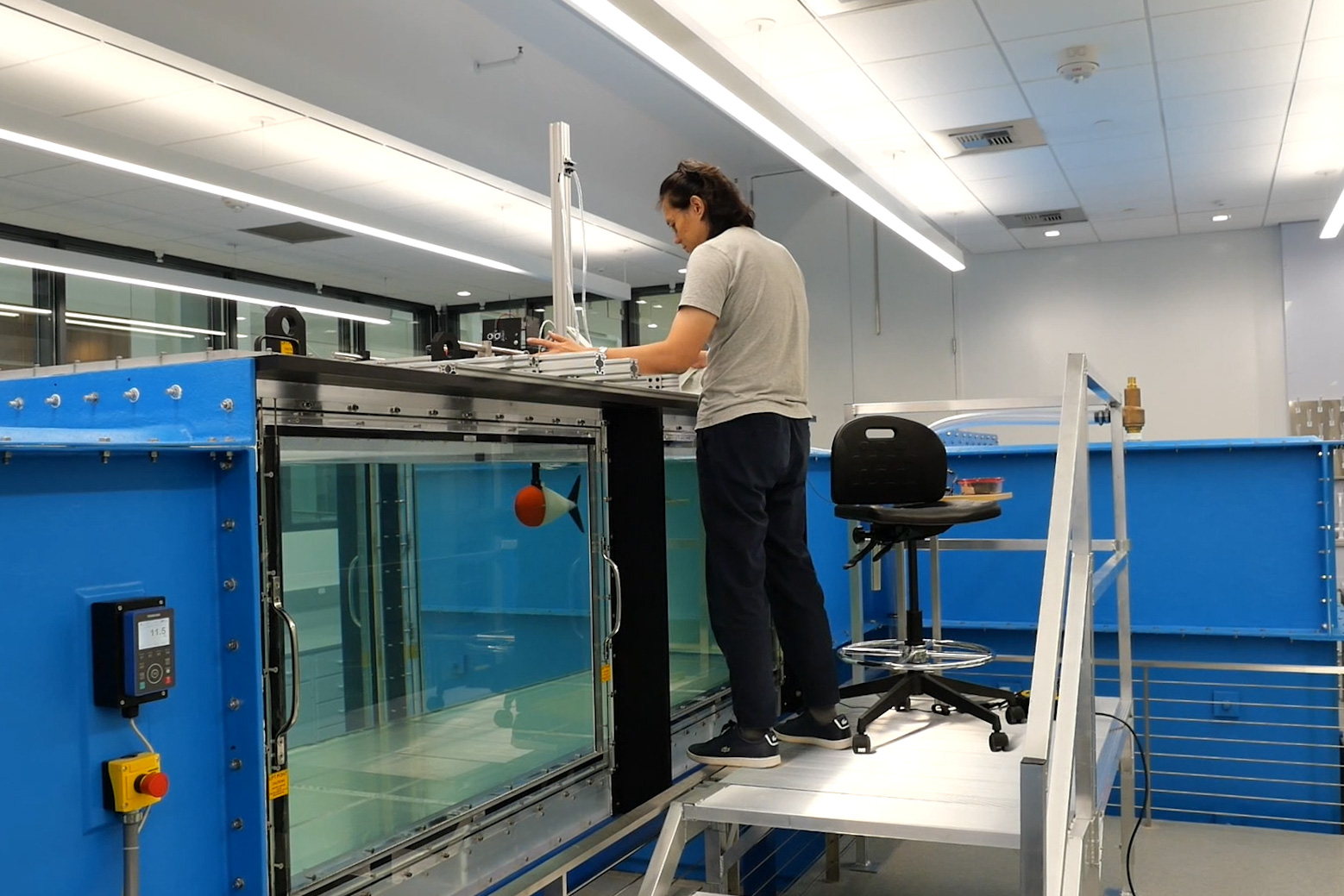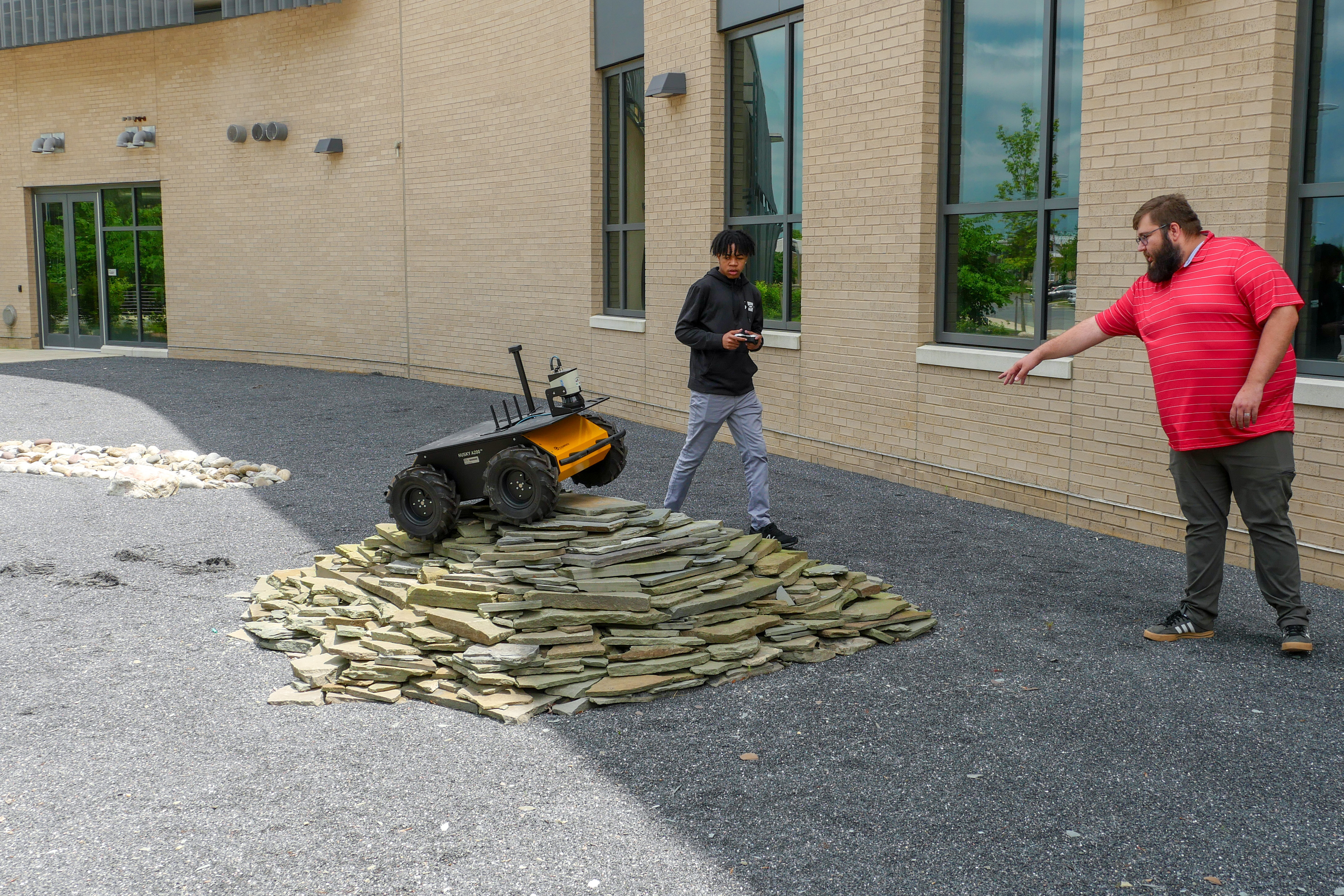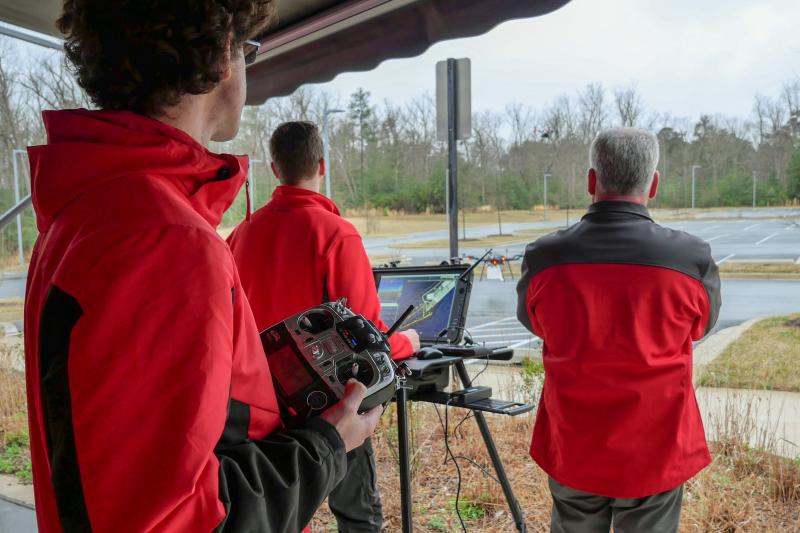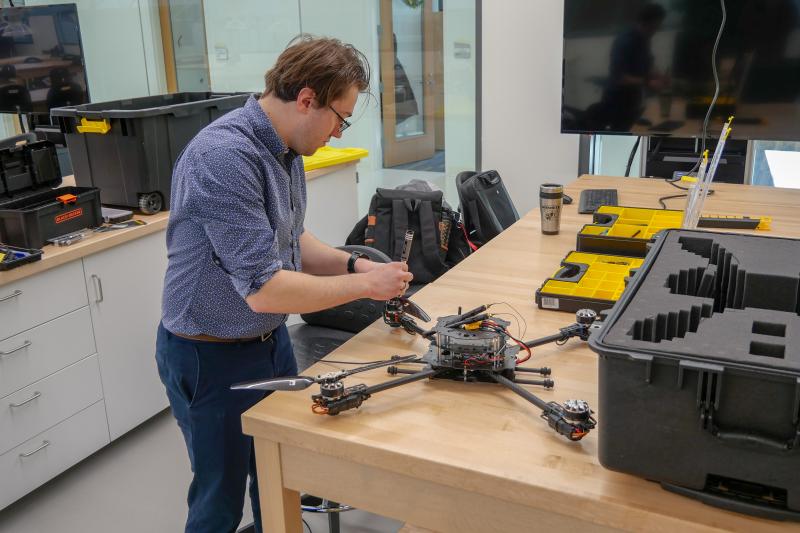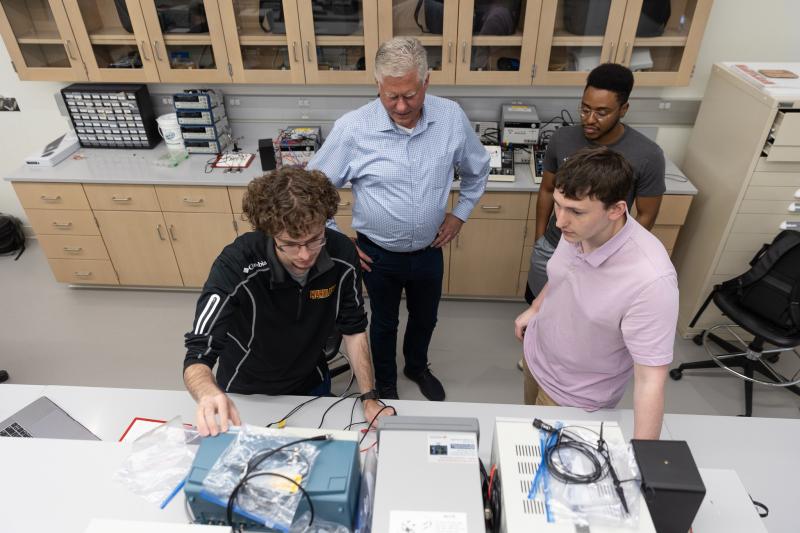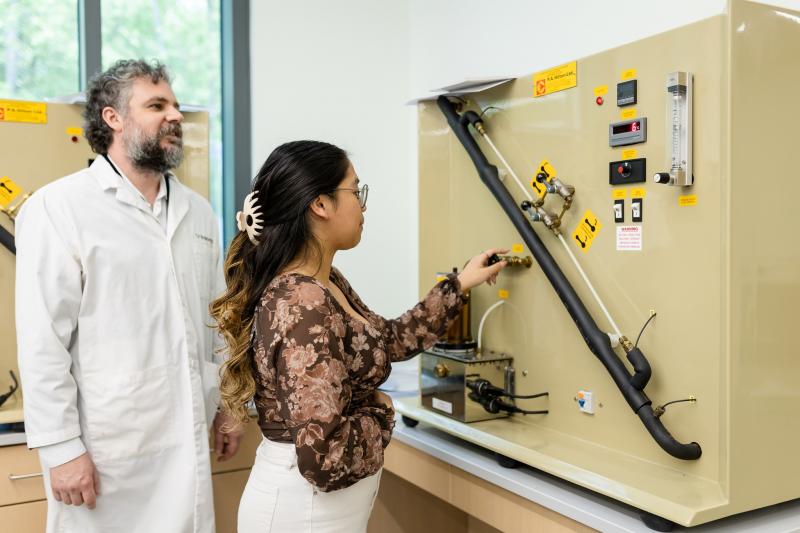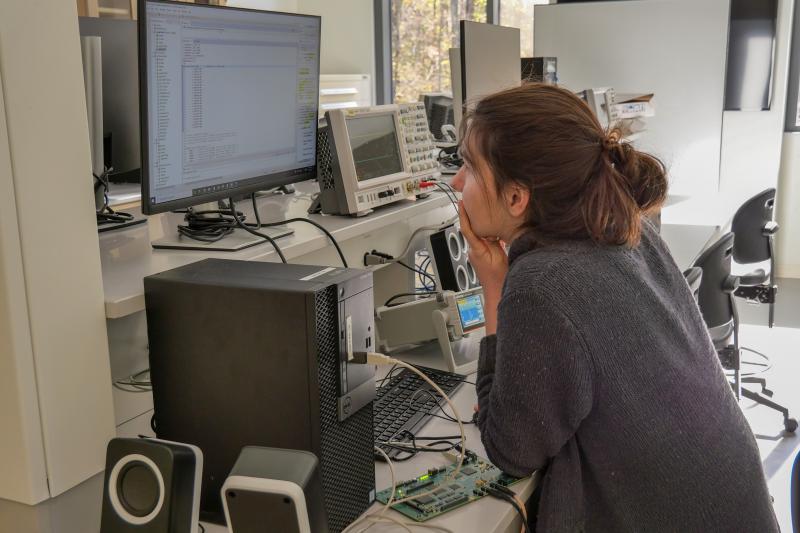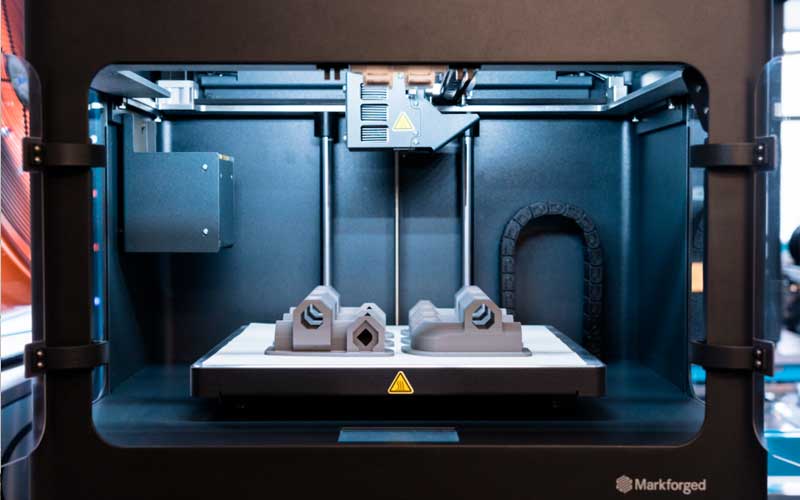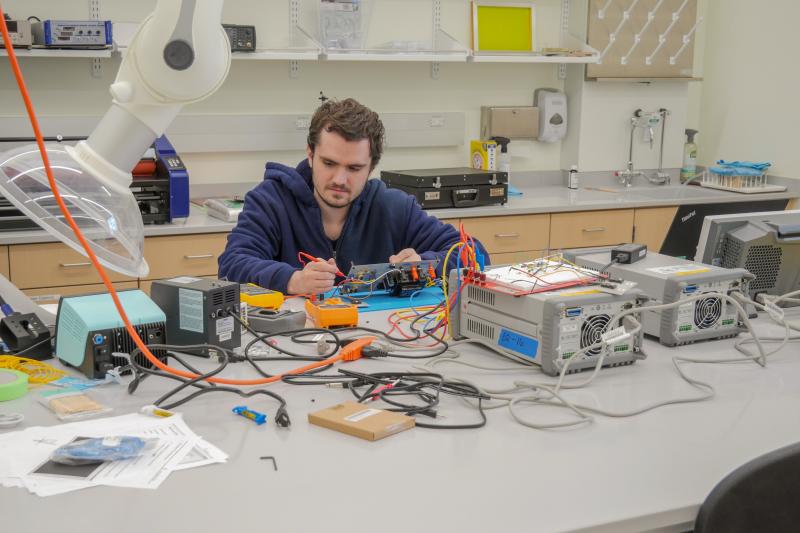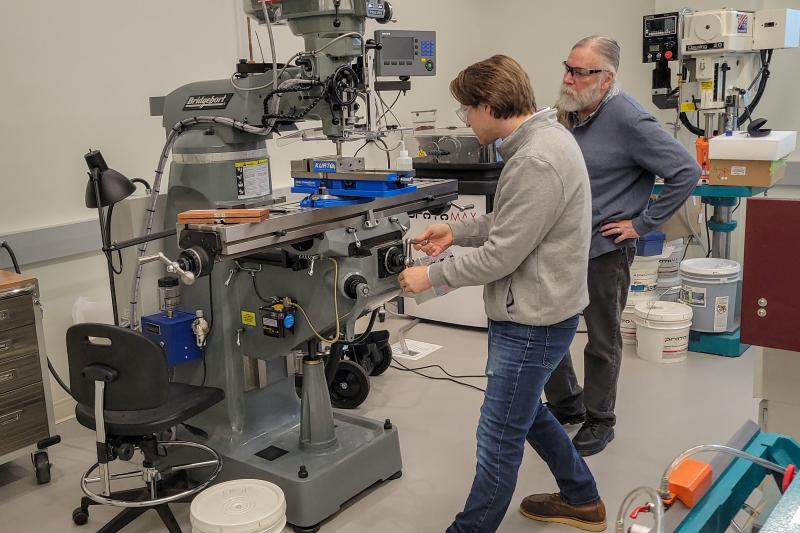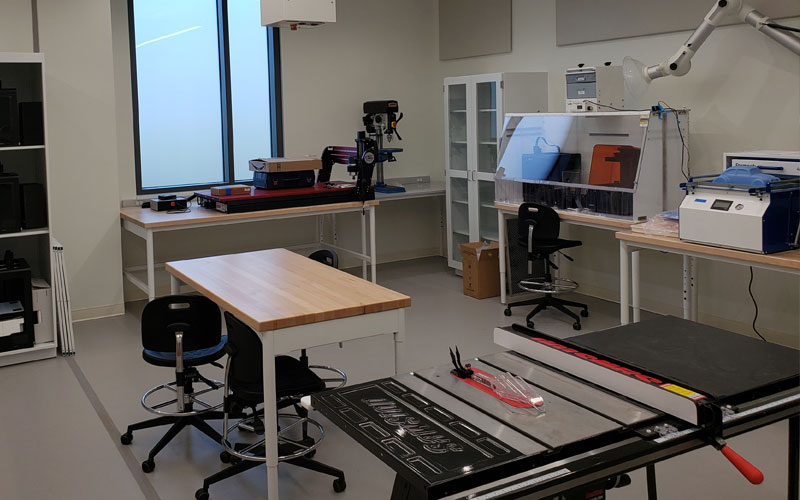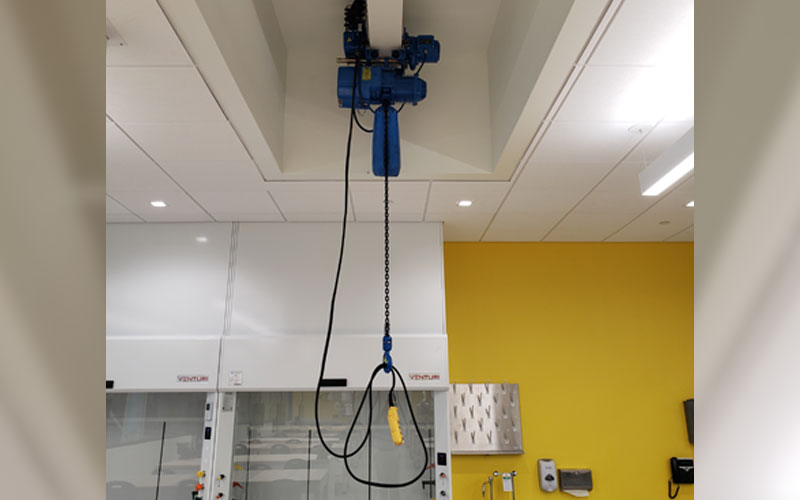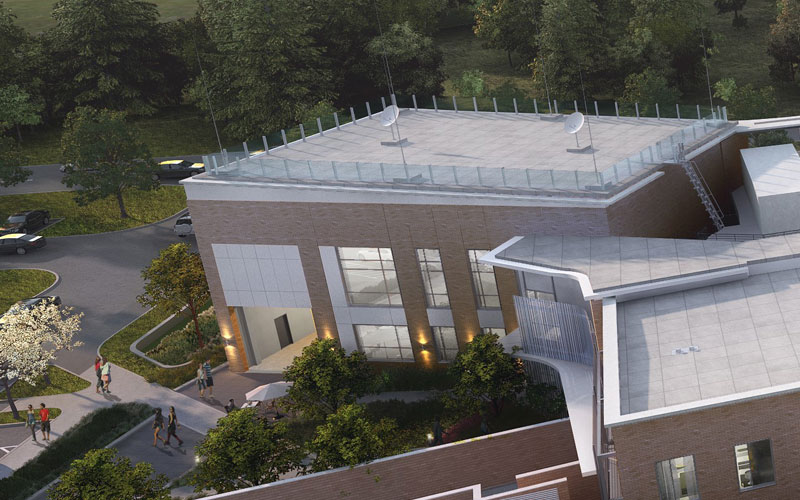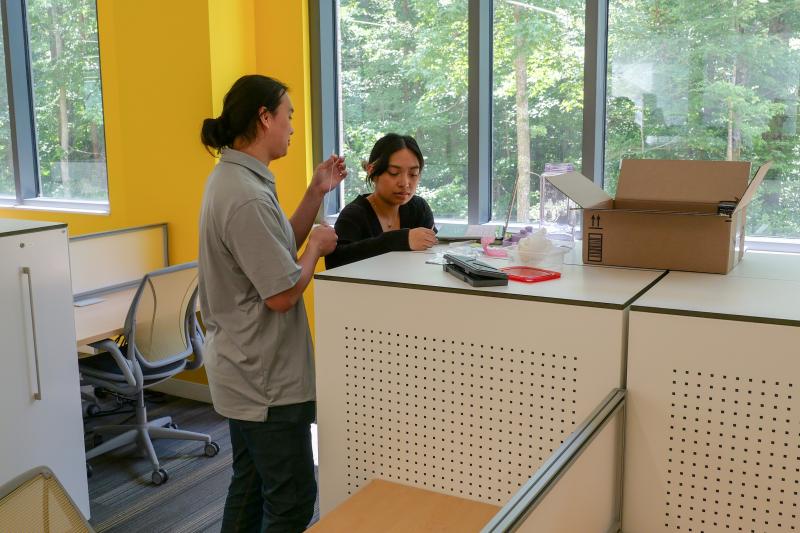Labs and Workshops
Labs
Advanced Manufacturing Lab (AML) @ SMART
The AML @ SMART Lab supports sensor and device integration with autonomous systems using 'cleanroom-free' methodologies. The space enables iterative prototyping at the micro- and meso-scale, as well as benchtop evaluation within simulated environments. The space allows for topical short courses and an AML course, supporting the workforce development mission of the University of Maryland and USMSM.
OASIS
The Omni-Domain Autonomous Systems Integration Space (OASIS) is one of the largest labs of its kind in the country. It allows students and researchers to test air, ground, and water systems. The lab is RF attenuated, which protects both internal systems and the external airport environment. The Vicon Vantage camera system digitally captures and records motion. The in-floor water tank allows for water interface testing. It provides an ideal space for flying indoor drones, and testing outdoor drones.
Hydrodynamics Lab
The Hydrodynamics Lab is home to the second-largest water tunnel in the state of Maryland. The water tunnel is used to experiment and test the hydrodynamics of underwater objects that are flowing through the water tunnel, as well as any objects that are placed within them. Researchers can conduct low Reynolds Number research into materials, devices, and assemblies. This aids basic research, testing, and evaluation of aerodynamic vehicles and autonomous marine robotics.
Anechoic Chamber
Don’t touch the cones! The MATRIX Lab’s Anechoic Chamber is a shielded room designed to stop reflections of sound and electromagnetic waves, to enable the testing of microwave components. Carbon-infused tapered cones absorb a large band of frequencies at many angles. The pyramidal structure minimizes reflections. Students and researchers can perform measurements of antenna radiation patterns, electromagnetic compatibility (EMC) and radar cross section measurements. Remember - don’t touch the cones!
Outdoor UGV Playground
You made your Uncrewed Ground Vehicle (UGV), now it’s time to put it to the test. The MATRIX Lab’s Outdoor UGV Playground provides the space for you to do that. The gravel area has landscaped and incorporated material challenges including trees, mulch, rocks, rock piles, and a rock path. See if your vehicle can take on the terrain, or if your vehicle can turn quickly enough to avoid obstacles.
Open-Air UAS Flight
Supported by the UMD UAS Research and Operations Center (UROC), operating processes are already in place to fly Uncrewed Aircraft Systems (UAS) within the airport environment and other areas. Relationships with both the FAA and FCC support research work into all applicable areas. The UROC team is available to facilitate the transition from lab basic research to outdoor applied and operational research.
Project Assembly Area
The MATRIX Lab’s Project Assembly Area is a space to create and collaborate. The room has several stations available for reservation. Each station includes a video display capable of streaming, a table with six chairs, a counter with cabinets and drawers, a fume hood, and a vise. There are also rolling white boards and dry erase markers available for jotting down ideas and sketching prototypes.
Electrical Engineering Lab
Electrical engineering involves the study, design, and application of equipment, devices, and systems involving electronics. Our Electrical Engineering Lab provides a hands-on learning classroom experience for students. The lab is divided into stations, each with the equipment students need to learn how to generate various types of signals (also called waveforms) and view and measure those signals. UMD’s Department of Electrical and Computer Engineering offers a broad range of programs and research opportunities.
Mechanical Engineering Lab
Turn ideas into reality with the Mechanical Engineering Lab. Mechanical engineering is the broadest of the engineering disciplines. It focuses on the design, manufacturing, and operation of a wide range of components, devices, and systems. The traditional fundamentals of mechanical engineering include solid and fluid mechanics, thermodynamics, transfer processes, materials engineering, electronic instrumentation and measurements, controls, and design. The new and emerging areas include smart structures, machine learning, additive manufacturing, and medical robotics. Our lab allows students and researchers to test and observe materials. Its main feature is the open circuit subsonic wind tunnel. Wind speeds reach up to approximately 110 mph, so it is designed for education and small research projects.
Robotics Lab
Both the mechanical and the electrical engineering programs include microelectronics classes. Students learn how to make power supplies, design amplifiers, and build audio amplifiers. The senior-level lab classes, like signal processing, are held in the Robotics Lab. There is also a capstone course that involves flying nano drones held in the lab. The Robotics Lab also has research capabilities, like semiconductor research, providing a setting to enhance the classroom experience of the Electrical Engineering Lab.
Design and Production
3D Printing Workshop
Our 3D Printing Workshop is for fabricating unique components that there’s no other way to fabricate, and is available to students and researchers alike. The Markforged metal 3D printing system is a unique and safe way to 3D print metal, never exposing you to metal dust. Inhaling metal fumes can cause dizziness and nausea, even lung damage and some cancers. 3D printers can quickly create models and prototypes, but they’re also used to create final products.
Electronics Shop
Our Electronics Shop is open for students and researchers to design and fabricate electronic prototypes and components. Our three-step pick-and-place system allows users to prepare a circuit board, use the pick-and-place machine to place electronic components, then use the oven to fuse everything together. There is also a Printed Circuit Board (PCB) Prototyping machine for fabricating specific and unique prototypes. Extra equipment allows students and researchers to test circuit boards at every stage of the development process.
Metallic Machine Shop
Cut, mill, weld, and create components in our Metallic Machine Shop. The equipment can be used to fabricate mechanical components such as containers, supports, and structures, for educational purposes. One student used the shop’s water jet cutter to cut parts to a drone frame out of carbon fiber. Manual and computer-controlled milling machines allow you to choose how you’d like to create your component. If you designed it, make it here.
Non-Metallic Machine Shop
Our Non-Metallic Machine Shop goes way beyond woodworking. The resin 3D printer is available to students and researchers. Its high-precision printing leads to a smooth, high-resolution finish on components. There is a cleaning station to wash off the remaining liquid resin. The sewing machine allows you to work with fabric materials. The vacuum thermoforming machine allows you to create plastic objects. There is also classic woodworking equipment including a chop saw, table saw, and computer numerical control (CNC) router.
Other
Project Transport Rail
Carry your projects through the stages of design and production, and testing and evaluation. Our motorized transport rail has a one-ton capacity, and runs the full length of the MATRIX lab. It begins in the Project Assembly Area and runs along the ceiling through the Hydrology Lab and into our loading area, an interior room with access to the outside and our parking lot.
Rooftop Antenna Farm
Our Rooftop Antenna Farm works with the Open Air-Land Lab. The RF shielding surrounding the lab is to prevent outside signals or radio noise from affecting the testing going on in the lab as well as keeping in any signals the test could create. However, you can create a connection to the outside world with your antenna of choice on the rooftop farm. This creates a link between the internal and external that won’t be interfered by other signals. This supports external environment testing.
Collaboration and Post-Doctoral Spaces
Surrounding the technical work areas, the MATRIX Lab has incorporated Collaboration and Post-Doctoral Spaces to accommodate the planning and design process. Our spaces provide a professional area to openly collaborate or quietly work, and are open to students, staff, faculty, and researchers. Sit next to or across from your partners at the spaces in the middle, or sit against the wall for more privacy. Each desk includes a cabinet with a lock and key to keep your work and personal belongings secure. All desks have access to wifi, and most desks have ethernet ports.

